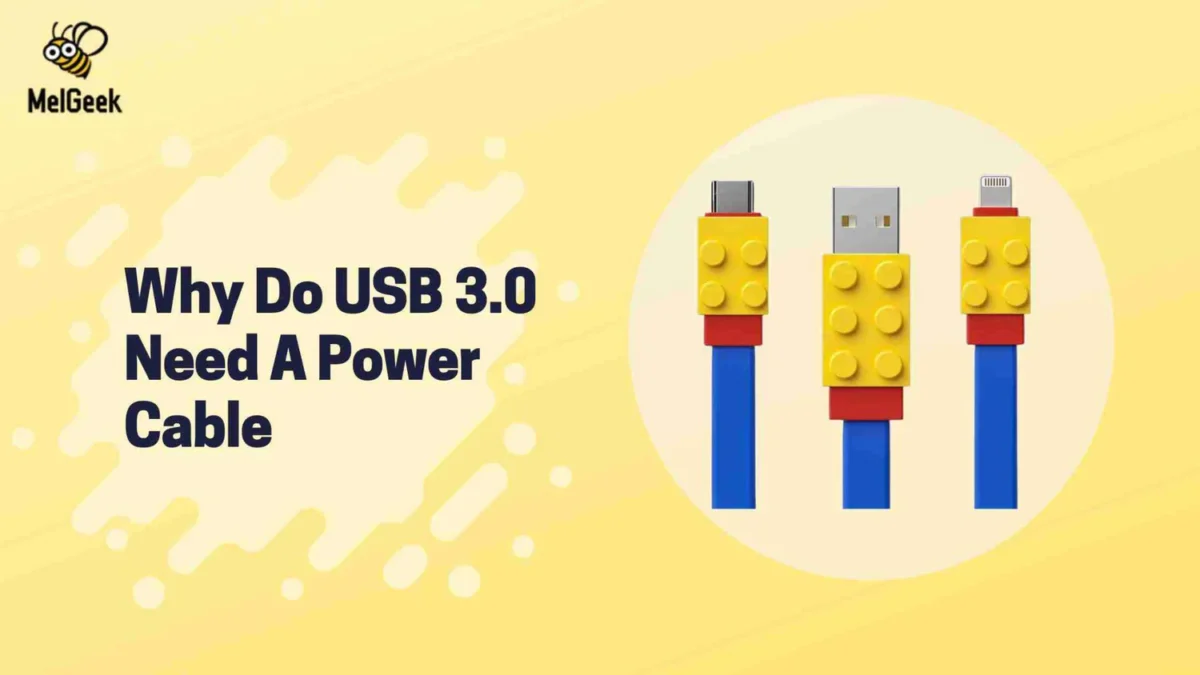Have you ever wondered about the details of the USB 3.0 to 3.0 cable and their role in our connected world?
USB 3.0 to 3.0 cable have become essential accessories in the technological world, offering high-speed connectivity and versatility for various devices. From transferring data between computers to charging smartphones and connecting peripheral devices, USB 3.0 cables play a crucial role in our interconnected world. In this article, we’ll explore the features and uses of USB 3.0 cables, as well as common questions and concerns users may have.
What Is USB 3.0? – The Plug

USB 3.0, also known as SuperSpeed USB, is the third major version of the Universal Serial Bus (USB) standard. It offers significant improvements over its predecessor, USB 2.0, including faster data transfer rates, increased bandwidth, and improved power management. The distinctive blue color of the USB 3.0 port and plug makes it easy to identify.
How We Can Use USB 3.0 to 3.0 Cable?
The USB 3.0 to 3.0 cable, also referred to as a USB 3.0 extension cable, allows users to connect two USB 3.0 devices for data transfer or charging purposes. This cable is backward compatible with USB 2.0 and USB 1.1 devices, but to fully utilize its speed capabilities, both connected devices should support USB 3.0.
USB 3.0 to 3.0 Cable Type C
USB Type-C, or simply USB-C, is a powerful and reversible connector that has become increasingly popular in recent years. It offers faster data transfer speeds and supports various protocols such as USB 3.1, USB Type 3, and DisplayPort. USB-C to USB 3.0 cables allow users to connect USB-C devices to USB 3.0 ports for high-speed data transfer and charging.
USB Type B
USB connectors are commonly used in peripheral devices such as printers, scanners, and external hard drives. Type-B cables feature a square-shaped plug that connects to the device and a rectangular-shaped plug that connects to the host device, such as a computer or laptop.
3.0 USB Type A
Type-A connectors are the traditional rectangular-shaped plugs found on most computers, laptops, and USB hubs. USB-type cables are used to connect these devices to peripheral devices such as printers, keyboards, and mice for data transfer and charging.
USB Cable Motherboard
USB 3.0 cable ports are commonly integrated into motherboards to provide high-speed connectivity for peripheral devices. Motherboards typically feature both USB 3.0 Type-A and USB 3.0 Type-C ports to accommodate a wide range of devices.
The Benefits of USB 3.0 to 3.0 Cable | CWS Blog

USB 3.0 cables offer a range of benefits that make them essential for digital devices today. Here are some of the key advantages:
Faster Data Transfer Speeds:
USB 3.0 cables support data transfer speeds of up to 5 Gbps (gigabits per second), which is significantly faster than the previous USB 2.0 standard. This allows for quicker file transfers, reducing waiting times and improving productivity.
Increased Bandwidth:
With USB 3.0, users can transfer larger files and stream high-definition multimedia content with ease, thanks to the increased bandwidth provided by the SuperSpeed USB standard.
Backward Compatibility:
USB 3.0 cables are backward compatible with USB 2.0 and USB 1.1 devices, ensuring compatibility with a wide range of peripherals and devices. This means that users can still use their existing USB devices with newer USB 3.0 ports and cables.
Improved Power Management:
USB 3.0 cables feature enhanced power management capabilities, allowing for faster charging of devices such as smartphones, tablets, and other USB-powered devices. This reduces charging times and ensures that devices are ready for use when needed.
Versatility:
USB 3.0 cables come in various connector types, including Type-A, Type-B, and Type-C, making them compatible with a wide range of devices, including computers, laptops, printers, external hard drives, and smartphones. This versatility ensures that users can connect multiple devices using a single cable type.
Future-Proofing:
As technology continues to evolve, USB 3.0 cables provide a future-proof solution for high-speed connectivity needs. With its faster data transfer speeds and increased bandwidth, USB 3.0 is well-equipped to handle the demands of emerging technologies and applications.
Cost-Effectiveness:
Despite offering superior performance compared to older USB standards, USB 3.0 cables are relatively affordable and widely available, making them a cost-effective solution for users looking to upgrade their connectivity options.
USB 3.0 to 3.0 Cable iPhone

While iPhones use proprietary Lightning connectors. Users can still connect their iPhones to USB 3.0 ports using a Lightning to USB 3.0 adapter or cable. This allows for faster data transfer and charging compared to older USB 2.0 connections.
What Is a USB Composite Device
A USB composite device is a type of USB device that combines multiple functions into a single device. Examples include multifunction printers, smartphones, and game controllers. Which integrates various components such as printers, cameras, and input devices into a single USB interface.
How to Connect Apple CarPlay Honda Without USB
Some Honda vehicles are equipped with wireless Apple CarPlay functionality. Allowing users to connect their iPhones to the car’s infotainment system without the need for a USB cable. To use wireless CarPlay, ensure that your iPhone and car’s infotainment system are compatible and follow the manufacturer’s instructions for setup.
What Is A-A USB Cable? Uses and Benefits
A-A USB cables, also known as USB host cables, feature Type-A connectors on both ends. These are commonly used for connecting two host devices, such as computers or laptops, for data transfer or networking purposes. These cables are less common than other USB cable types but can be useful in certain applications.
SuperSpeed USB 3.0 to 3.0 Cable, 2M
The “SuperSpeed USB 3.0 A to A Cable – 2M” offers high-speed connectivity between compatible devices with its USB 3.0 technology. With a length of 2 meters, it provides flexibility and convenience for connecting peripherals to your computer or laptop. Experience rapid data transfer rates and reliable performance for your multimedia, storage, and charging needs. Upgrade to this cable for seamless connectivity and enhanced efficiency in your digital workspace.
Conclusion
In conclusion, USB 3.0 to 3.0 cables offer high-speed connectivity and versatility for various devices. Whether you’re connecting peripheral devices to your computer, transferring data between devices, or charging your smartphone, USB 3.0 cables provide the speed and reliability you need. With the increasing adoption of USB-C and the ongoing evolution of USB technology, USB 3.0 cables continue to play a crucial role in our interconnected world.
FAQs
Can I use a USB 3.0 to 3.0 cable with a USB 2.0 port?
Yes, USB 3.0 cables are backward compatible with USB 2.0 and USB 1.1 ports. However, you may not achieve the maximum data transfer speeds offered by USB 3.0. If one of the connected devices does not support USB 3.0.
What is the maximum data transfer speed of USB 3.0?
USB 3.0 supports data transfer speeds of up to 5 Gbps (gigabits per second), which is approximately 10 times faster than USB 2.0. This high-speed connectivity is ideal for transferring large files or streaming high-definition multimedia content.
Are USB 3.0 cables compatible with USB-C devices?
Yes, USB 3.0 cables can be used with USB-C devices using an appropriate adapter or cable. However, to fully utilize the speed capabilities of USB 3.0, both the USB-C devices. The host device should support USB 3.0.










